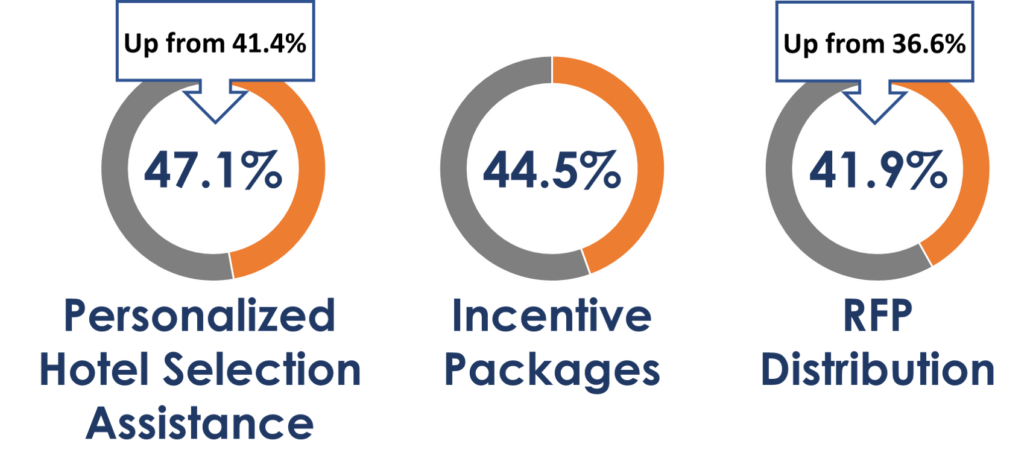What do meeting planners love about CVBs? What services do meeting planners wish to see more of from CVBs in order to make their destination top-of-mind? And, with a constantly changing industry, what are the predominant trends?
Destinations International invited us to speak at their 2019 Annual Convention on the future of the meetings industry. CEO Erin Cummings and Director of Research Myha Gallagher, along with a live online panel of meeting planners, discussed trends impacting the meetings industry, the most valuable assets of CVBs according to meeting planners, and what meeting planners hope to see more of from CVBs in the future. The 500 meeting planners who completed the survey represent a variety of meeting types—corporate, association, smerf, third party—meeting sizes, and industries.
Trends in the Meetings Industry
Trends in travel shift every year as motivational factors for selecting destinations change. It is vital that CVBs understand these trends in order to market accordingly. “We asked meeting planners in an open-ended format to expound on the trends they feel will have the biggest impact in the future,” Gallagher explained. Here’s what we found out.
“Technology – you’d better keep up or you will be obsolete.”
Time and time again, technology was mentioned among surveyed meeting planners as an omnipresent force in the industry.
“I think that social media culture will continue to mean driving meeting attendance by promising a unique and different event experience with memorable photo ops.”
Another sentiment commonly shared among respondents was that the growing popularity of mobile apps and/or social media allows for virtual sharing of meetings content. There was also
the notion that social media culture demands for a type of “social proof” to document the event experience.
“Live streaming & on-demand will become much more prevalent due to decreasing costs & more competition & improving technologies”
In a similar regard, technology not only provides access to social media sharing but allows for sharing through a live stream meeting, extending the reach.
“More attendees reserving short-term housing rentals (Airbnb) vs. hotel rooms.”
Cummings pointed out that planners noticed an increase in AirBnB access and preferences for lodging outside hotels among attendees. There was ambiguity about whether this will help or hurt meeting attendees.
What Meeting Planners Love About CVBs
We asked the surveyed meeting planners what are CVB best practices. They responded that they love when CVBs provide personalized hotel selection assistance, incentive packages, and RFP distribution.

Gallagher acknowledged that “I have long heard grumbling that hotel salespeople often don’t bring in the CVB.” We addressed this in our study: there is a growing agreement among meeting planners that if national hotel sales offices worked closely with the local CVBs, meeting planners would benefit (81.5 percent of respondents “Agreed” or “Strongly Agreed” with this notion, which is up from 77.1 percent the previous year). We hope to bring the hotel community into the discussion next year.
Keys for Marketing to Meeting Planners
“Given that meeting planners are such important customers to CVBs,” Cummings noted, “it is important that CVBs know how to attract more engagement from them.” We asked the meeting
planners which CVB behaviors would have the greatest impact on them using their services more.
“Based on our findings,” Cummings recapped, “the greatest impact a CVB can have on a meeting planner is to guarantee a sit-down meeting to truly understand their event and act as a partner, rather than a salesperson.”

The meetings industry is an integral part of tourism profit. Ensuring that CVBs have an up-to-date, accurate understanding of the attitudes and needs of their most significant customers is paramount to their success.
By Eva Tirion
